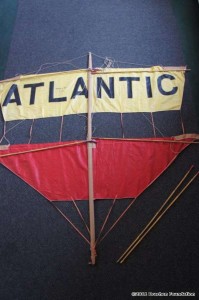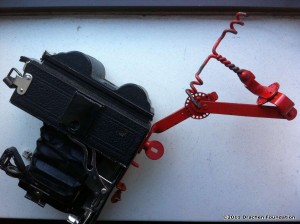Tour the new foundation website!
 I’d like to take Kitelife.com readers on a guided tour of the new Drachen Foundation website, and in the process, help kite enthusiasts, researchers, and collectors to pass on their passion for all things kite-like. Our intent, when redesigning the Foundation website, was to organize over fifteen years of information so that it is clearly presented, readily searchable, and useful to kite enthusiasts, teachers, and the general public.
I’d like to take Kitelife.com readers on a guided tour of the new Drachen Foundation website, and in the process, help kite enthusiasts, researchers, and collectors to pass on their passion for all things kite-like. Our intent, when redesigning the Foundation website, was to organize over fifteen years of information so that it is clearly presented, readily searchable, and useful to kite enthusiasts, teachers, and the general public.
The first point you should all notice is that we’ve organized the website under four major headings: Learn, Teach, Interact, and Browse. Visitors with a variety of motivations can find what they want if they start from the four topics: if you’re a teacher, looking for projects or information, start with “Teach.” If you have no idea what kites are all about and want a quick tutorial on basic kite information, start with “Learn.”
The easiest way to think of these topics, and the way we thought of them in the first place, is to put them in a personalized sentence, “I want to teach,” or “I want to interact,” for example.
This should get you started in an area of the website that will be most helpful to you.
Take a while to navigate the site and you’ll find much of the information that was on the old site; reports of Drachen workshops, the Foundation store, issues of the Drachen Journal and of Discourse from the End of the Line. Using the “search” function, the total site is searchable and you will get results! Much of the website is aimed at our largest audience, teachers, so if you’re an avid kite flier, there is plenty of information presented that you are very familiar with.
For you, the avid flier, collector, and researcher, we have a very exciting way for you to pass on your passion.
It’s time to look at the banner words at the top of the site (Log In, My Account, About Us, Collections, Store, Donate) and find out how you can actively participate with the Foundation. The first step is to enter through “My Account” and set up a user account for the site. This will allow you the ability to add information to the website and share that information with readers worldwide. So let’s see how it’s done. First, once you’re an authorized user, enter the site through “Log In” and provide your user name and password.
Make these easy to remember or use the site a lot so you won’t forget how to “get in.” Once logged in, you can now go to the “Collections” header and you will be on a page that will allow you to enter data into the Foundation website.
In effect, this allows you to contribute to what will, hopefully, become a vast virtual collection. You can enter an item from your own collection, a photograph of a kite that you want more information about, your own top ten list of sport kites, or a recollection from a festival or workshop. Almost anything goes!
Let me give you a couple of examples to show you how the input template works. (Notice that there are some fields that have an asterisk. These must be filled in.) I entered an historic Steiff Roloplan from my personal collection as a test case. In the Item Name, I wrote, “Steiff Roloplan, 150, 2, Atlantic” which is the nomenclature written on the Steiff kite bag. It’s very important if you are entering multiple items, like another Steiff kite, that the Item Name nomenclature is consistent; I have another, and it will be entered, “Steiff Roloplan, 180, 2, Atlantic.” This consistency will make the site’s search function much more powerful and will help users interested in finding your information. The most important block for you to fill in is the Description.
Here is your chance to say everything you know about the item. In the case of the Roloplan above, I entered: “Steiff Roloplan, 150, 2, Atlantic” kite from Germany, made c.1920. Four bamboo spars and two replacement spars, cotton sails, top yellow, bottom red. On the yellow sail, “Atlantic” is written in black.
The story I was told when I bought this kite is that it had been made for the opening of the Atlantic City Pier. The pier opened in 1898, so I suspect these kites were commissioned and sold as promotional items by a large toy store, probably around 1920.” You have the opportunity to add pictures (one word of caution is to limit your file size).
Notice that there is more information to input, but follow the directions and you’ll see that it’s easy. “Country” means the country of origin, so in the Roloplan case, it’s Germany. For kite fliers the “kite type” probably looks incomplete, but we’ve tried to limit the categories in order to make general searches more effective. With the Roloplan, I consider it both a flat and bowed kite, so both are highlighted. Finally, in “Significance,” look at the list and pick more, rather than fewer of the categories where you think the kite fits.
With the Roloplan, I felt this was a Cultural kite, specific to Germany’s history, it’s an Historical kite, as well, very important in European kite history, and finally, it’s a Commercial kite, made for sale as a high-end toy.
In walking through this exercise, I hope I have given you an idea of the potential power of this area of the website. Here, you have the power to contribute; important articles, photos, your own kite creations, objects that you know little about or a lot, even your own “Top Ten” lists.
Your imagination is the only limitation. (As an aside, already we have received feedback that our site has very little sport kite information. You can help to alleviate that problem, add reviews of kites, upload histories of the sport, you can even upload videos!) I hope that as I’ve walked through this exercise, you’ve gone to the site, established an account, and have followed along. Now it’s up to you, share your kite passion!
-Scott Skinner



